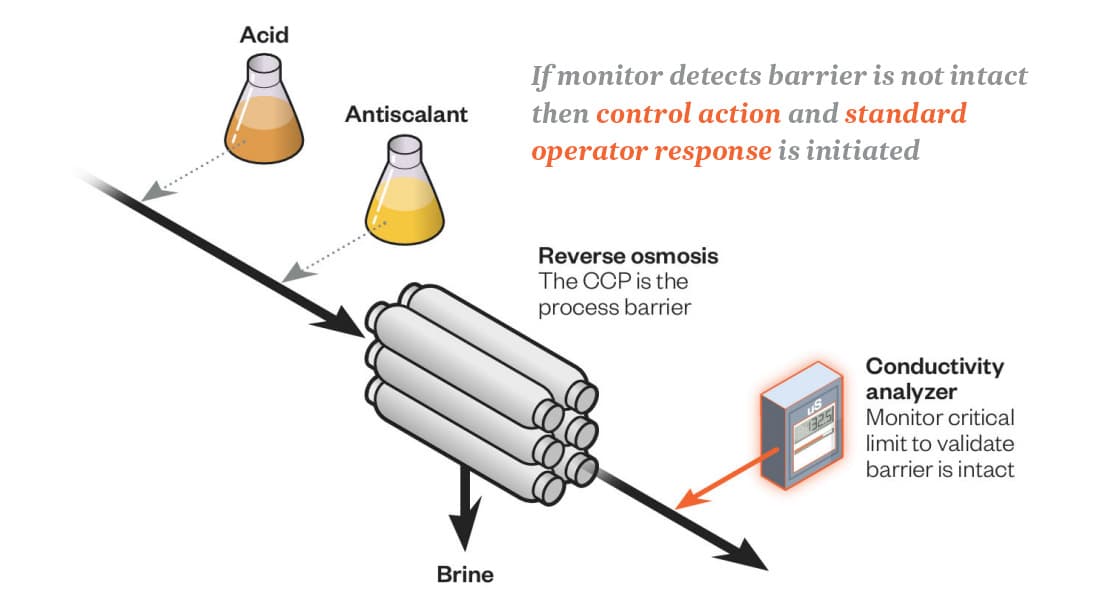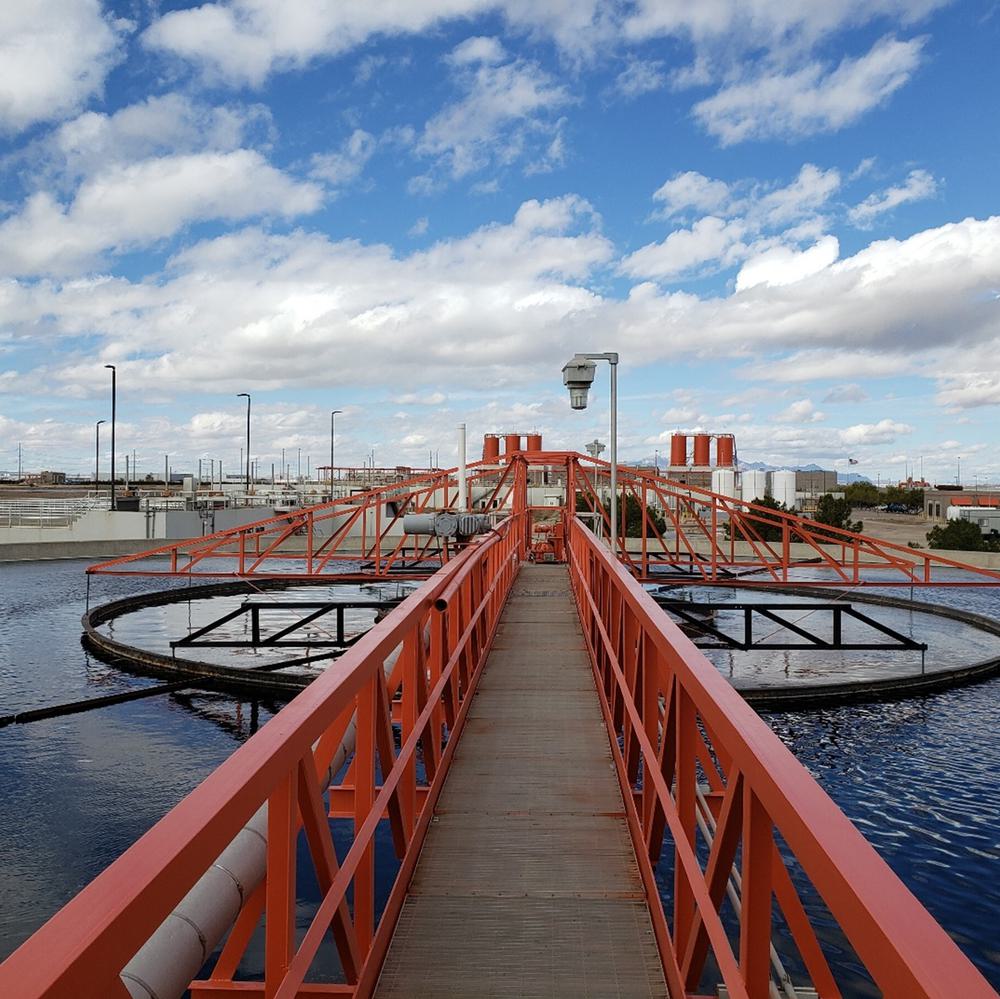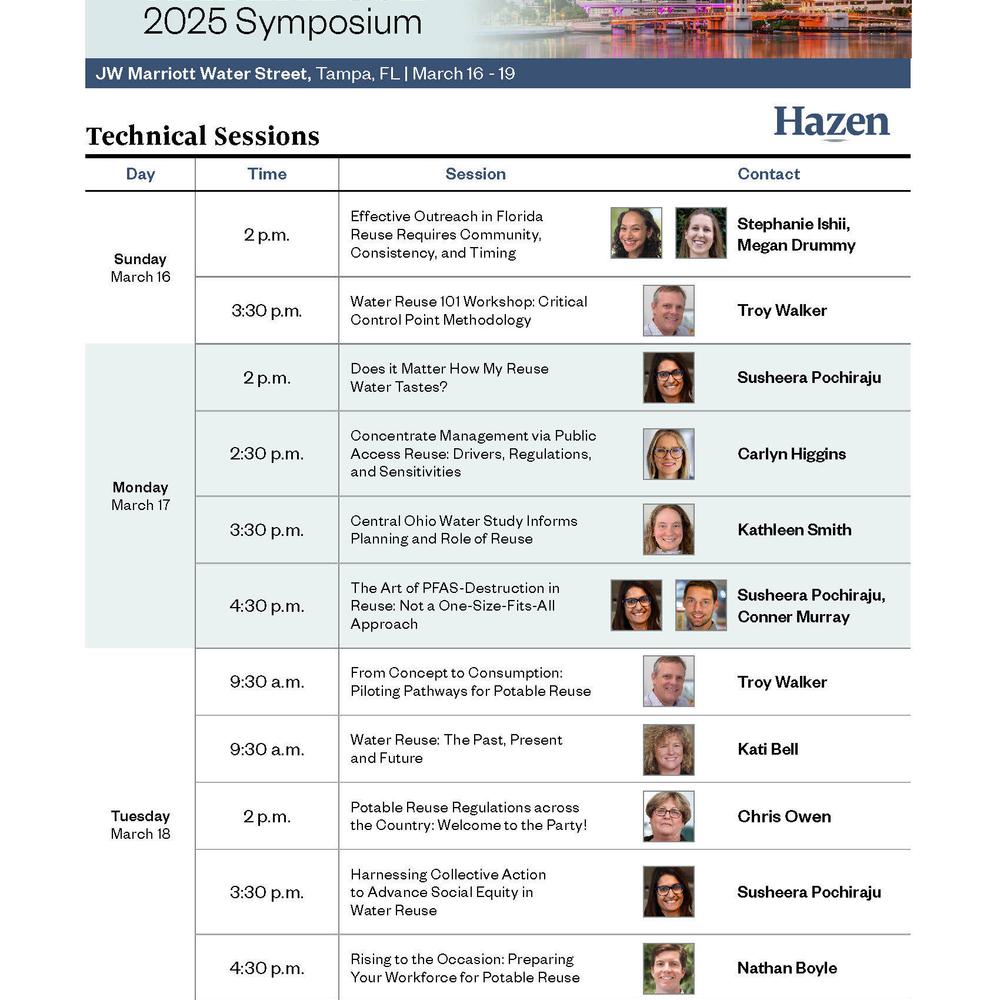Hazen Research Provides Guidance on Sensor and Data Monitoring Needs for Potable Reuse Applications
(DENVER, CO - November 3, 2023) - With extreme weather and population shifts putting unprecedented pressure on water supplies in water scarce areas and increasingly stringent nutrient discharge limits in many parts of the country, utilities are increasingly turning to potable water reuse to expand their water portfolios and reduce nutrient discharges. As new and existing reuse technologies are implemented more broadly, aesthetic or health‐based water quality issues may arise if proper care is not taken.
To prepare for these challenges, a team of researchers, including Hazen’s Ben Stanford, Troy Walker, and William Becker, Fernando Rosario-Ortiz and Blair Hanson from the University of Colorado - Boulder, and Mark LeChevallier from Dr. Water, LLC, recently published the final report for Water Research Foundation #5079 “Water Reuse and Beyond – Water Quality Monitoring Methods, Data, and Interpretation.”
Implementing appropriate water quality monitoring and interpreting monitoring data correctly are key to ensuring the continuous delivery of safe water. While many technologies and approaches are currently available, additional tools are needed to ensure safety and future regulatory compliance for potable reuse treatment plants.
As the field of water reuse sees more applications of direct potable reuse (DPR), facility operators must be mindful of the appropriate use of sensors to monitor plant operations and water quality. Sensors are required for three distinct but related areas: microbial contaminants, chemical contaminants, and operational needs. In addition, it is critically important to implement a sound technology/ data management and interpretation system.
The main goal of this project was to prepare a database of technologies (both currently available as well and those that are promising for the future), to identify needs that future technologies must address, to determine appropriate water quality and treatment monitoring tools, and to optimize the information from those tools to ensure high-quality potable reuse.
To accomplish this, the project team first compiled the current state‐of‐the‐art monitoring approaches used by potable reuse facilities. They then determined which sensors/monitors are necessary to enhance public health and safety, and where they should go in the treatment process and sewershed. The project team identified any potential impediments to sensor/monitor development and devised strategies to eliminate or minimize those impediments. The final step is issuing this report, disseminating guidance on sensor/monitoring use to utilities.

Related: Hazen built a data analytics program that can rapidly spot potential problems in potable reuse systems—helping operators address them before they could threaten public health or violate regulations.

An example of a reverse osmosis critical control point and electrical conductivity as a critical monitor.
The project team concluded that no sensors exist (nor are likely to emerge in the near future) that can detect the presence of microorganisms at health‐relevant concentrations (i.e., less than 1 in 10,000 risk of illness) in near‐real time for drinking water and potable reuse facilities, making process monitoring and surrogate monitoring through hazard analysis and critical control point (HACCP) methodologies critically important. Advances in data and analytics technology provide an opportunity to better streamline the collection and interpretation of large data quantities for real‐time operation support and can help to predict occurrences such as sensor maintenance/repair.
For more information contact William Becker, Ben Stanford, or Troy Walker.




















